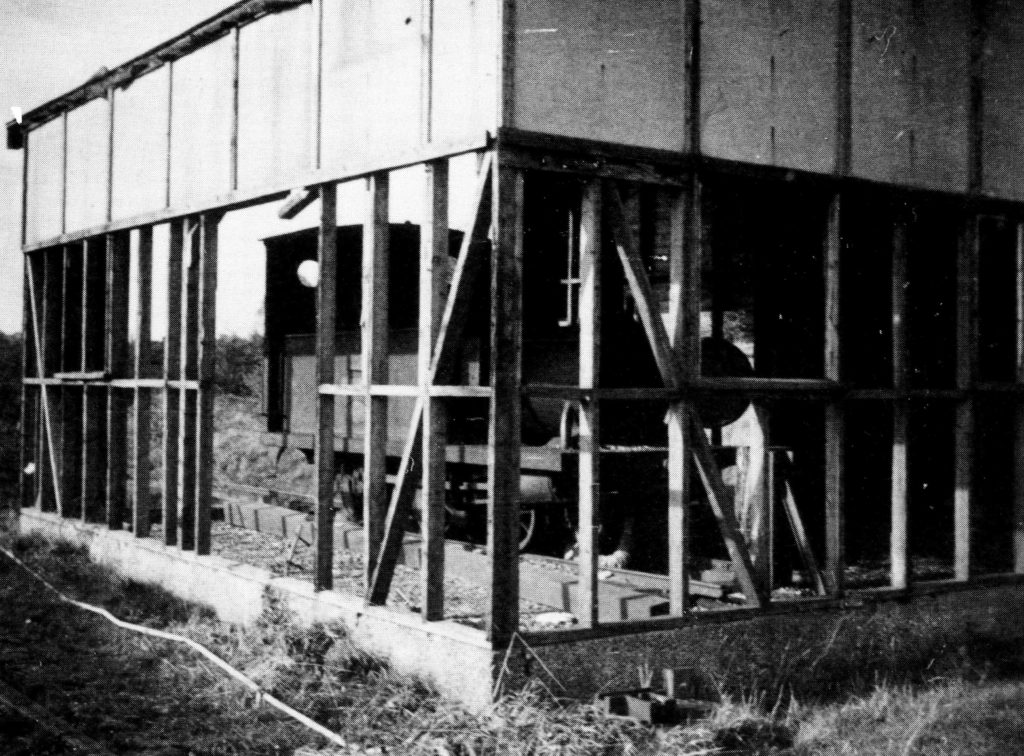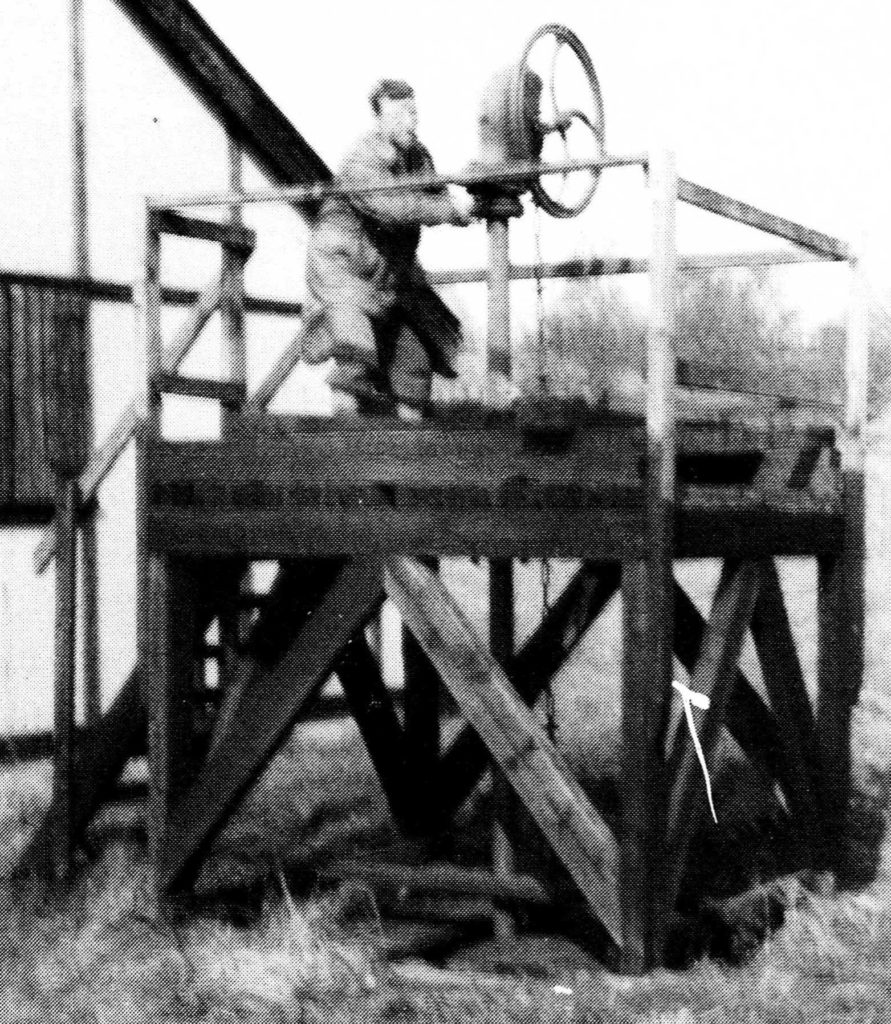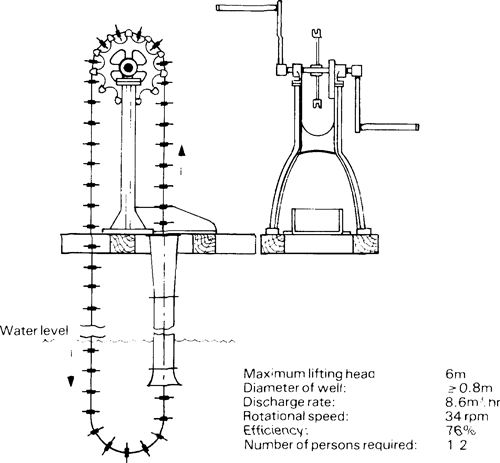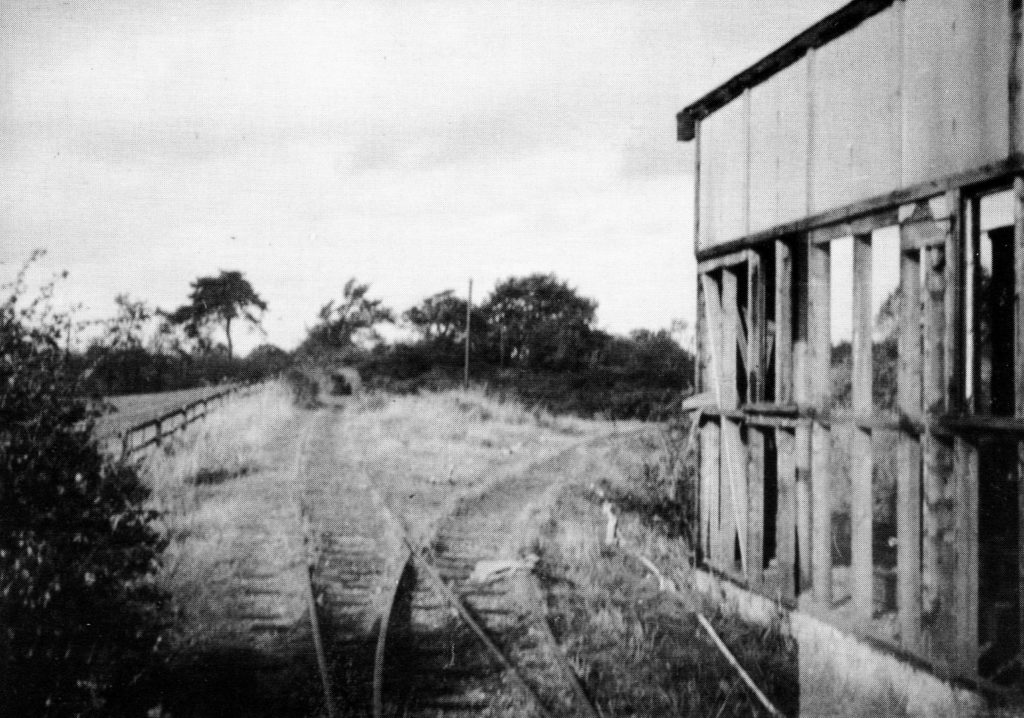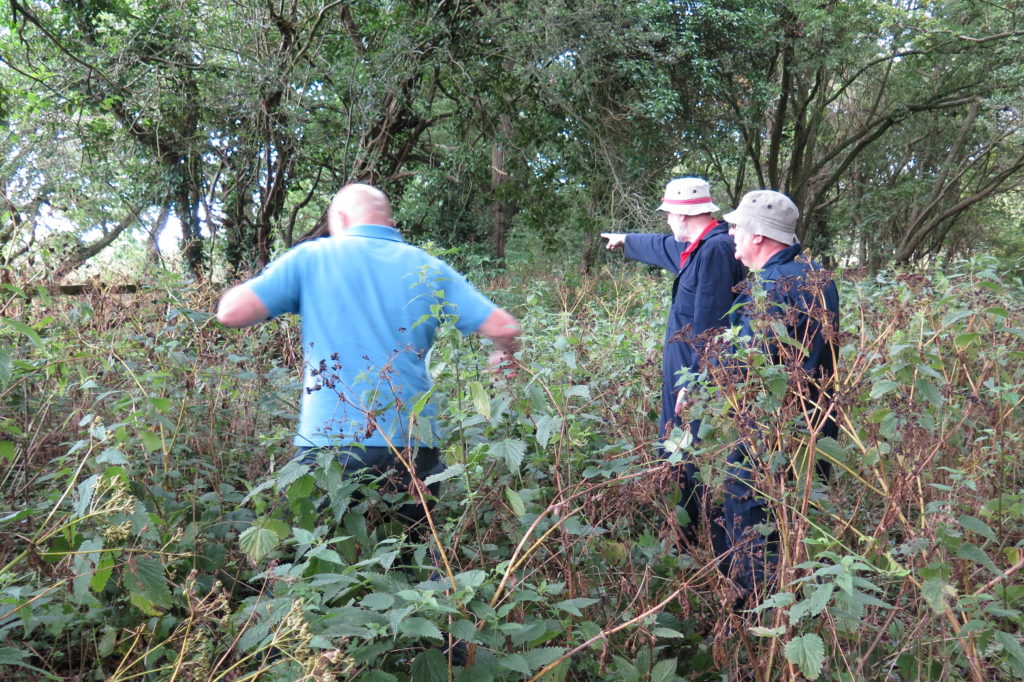
Thanks to an invitation from the Halesworth Millennium Green Trustees, the Wenhaston volunteers took a day off to tackle another trackbed section – and a very interesting one it turned out to be. Among the SR artefacts on the Green is the base of the 1910-built Halesworth locomotive shed and loco water pump: this area had become a little overgrown (a complete photographic record was taken, before work started).
The seven-strong (in one or two cases, very strong!) team first went to the Wenhaston Community Café, as is our wont, for a chat and some tea and cake – then we got stuck in to clearing the vegetation around the shed base at Bird’s Folly. We soon discovered the top of the well, from which locomotive water was drawn by a chain pump. Two of the bases which formed the foundations of the pump platform – a very substantial timber construction – emerged still in situ: a third was toppled into the well (which is full of earth).
As we started to uncover the well brickwork – lost for three quarters of a century – we found the fourth base buried a little way down – this extremely heavy concrete lump was hoisted out of the well by Digger’s digger, working as a crane. We will now be able to re-instate all the bases where they were: measuring the holes on the crete shows that the timber was that old friend, 6” x 3” – so the platform must have been made of sleepers.
The real revelation was the pit. This is about twice as long as the shed, being in two halves – an ashing-out area, outside, and an inspection pit, inside. It was made of brick and concrete, and after 115 years, is almost as good as the day it went in.
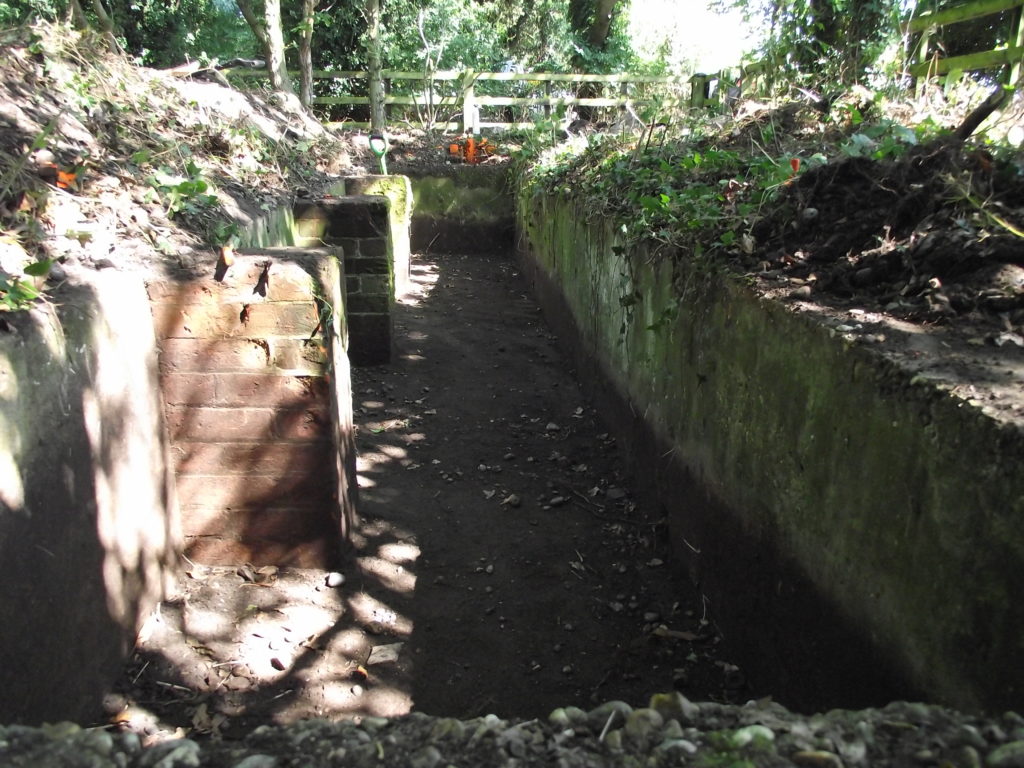
Onsite measurement shows that it is designed for use on the standard gauge (presumably, the SR had not finally abandoned the idea of re-gauging), with brick pillars added along the side, to provide support for the three-foot gauge track. The floor (solid concrete) is only about three feet below rail level – so locomotive maintenance must have been a back-breaking job. Anyway, though tired, we felt we had to complete the clearance of the main pit before leaving – and very nice it looks too. In the course of this work, we found the base and part of the fabric of the timber which formed the buffer stop – and a little further excavation showed the gas-axed-off ends of the rails, used for support. Several questions remain unanswered, so far (apart from the pit being designed for three-foot-tall staff – perhaps the designer got confused between the staff and the gauge): there is no evidence at all of a concrete – or indeed any – floor. Even the SR would not ask staff to do locomotive work on a mud floor – so it must have been timbered. And we now know the thickness of the longitudinal timbers which supported the rails in the shed – 7” – which seems pretty thin to take the weight of a loco – which it had to do between the brick pillars, on one side. We did not find as many loose SR artefacts as we expected – some steam coal, of course, and some very rusty metal which might just be boiler cladding: one metal part is definitely from “Blyth’s” boiler – and there may be a small piece of a boiler tube. Another part, seemingly from the firebox, has yet to be positively identified. It looks as if the WWII scrappers were quite thorough. We certainly had a good time, and, in between the spadework, did a bit of PR with passers-by. Next job will be to clear out the ash pit, and then to level the site: we are unsure at present whether to try to dig out the well, which will be a cramped and long job, with the necessity at the end to cover it safely.
We are working right alongside the public footpath, so come and see us – The Millennium Green is well worth a visit – we’ll be there (weather permitting) on Wednesday 12th, Saturday 22nd, and Wednesday 25th August.

